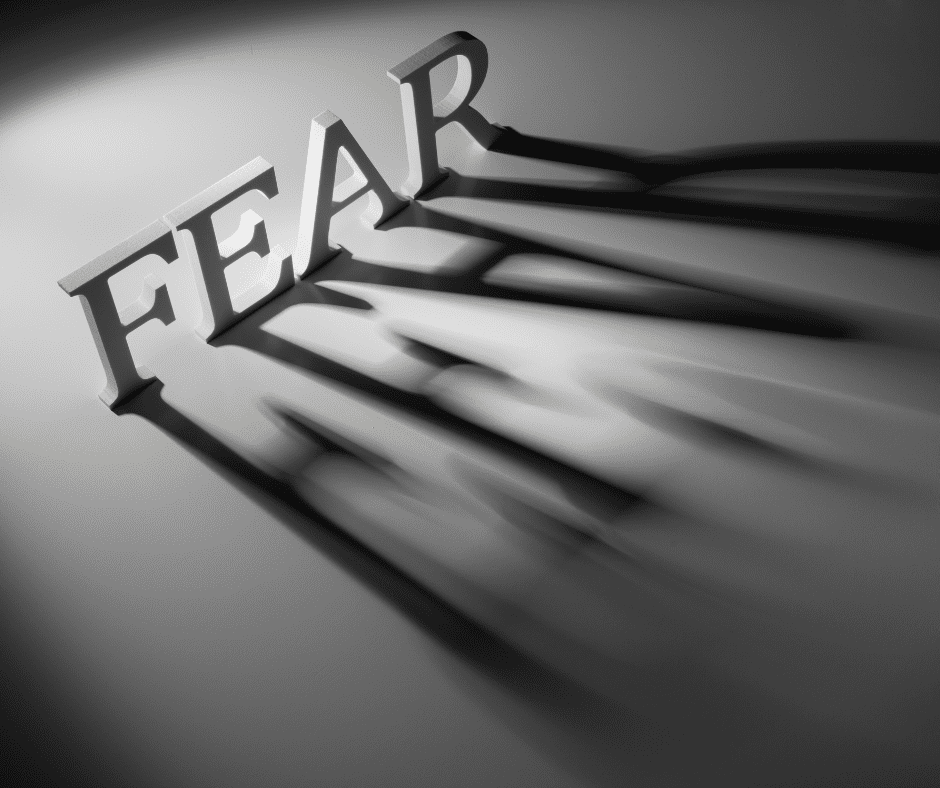As we approach Halloween, we see and hear many things about fear.
Scary TV shows, movies, and podcasts. Bloody costumes, bones in yards, and haunted houses.
Around this time of year, it’s all meant for fun but many people encounter fear all year long, not just around Halloween. Along with fear, there is anxiety.
What is fear? According to Merriam-Webster Dictionary, it is defined as “an unpleasant often strong emotion caused by anticipation or awareness of danger”.
Anxiety is often caused by fear or linked to fear.
How do we navigate this in our daily life? Below we will explore a few ways to help calm our fears and anxiety.
Breathwork

Deep breathing helps reset your autonomic nervous system – the system that controls your automatic functions like your heartbeat, blood pressure, swallowing, etc. – into a calmer space.
Here are two breathing techniques
Box Breathing – This technique has been used by everyone from Navy SEALs and first responders to nurses and teachers. It involves controlling both parts of your breath (breathing in AND out) as well as holding your breath.
It’s called “box” breathing because you do each part of the breath for an equal amount of time (4 counts), as if you are breathing around the sides of a square.
- To start, sit up straight in a chair, feet flat on the floor.
- Next, slowly exhale through your mouth as much air as you possibly can, for a total of 4 counts.
- Now, hold your breath for 4 counts,
- Then, gently and slowly breathe in through your nose for 4 counts.
- And then hold your breath again for 4 counts.
- For a full session of box breathing, you simply repeat the cycle for a total of 4
- times through.
Belly Breathing – Retraining your body to take deeper breaths will help you feel more relaxed and it can even help strengthen your deep core muscles. Make time for belly (aka diaphragmatic) breathing sessions every week. You can do this lying down or seated.
- Sit comfortably in a chair, your knees bent and your shoulders, head, and neck relaxed.
- Place one hand on your belly just below your rib cage, and the other on your upper chest.
- Breathe in slowly through your nose, feeling your stomach move out against your hand. The hand against your chest shouldn’t move.
- Next, draw your stomach in as you exhale through your mouth. Again, the hand on your upper chest should remain still.
- Repeat for 3-5 minutes.
Movement

Movement in general can help with uncomfortable feelings. Going for a walk or spending some time at the gym.
Being a yoga teacher, I’ll share a few yoga poses that you may find useful.
Easy Seat – sitting comfortably on the floor/mat or chair. Bringing awareness to your breath. You may practice one of the breathing techniques described above. You can also mentally say positive affirmations as you breathe in through your nose, and mentally release fear or anything that is not serving you as you exhale.
Mountain Pose – feeling the feet connected to the ground. Standing strong and steady like a mountain.
Any Warrior Pose – the name “Warrior” itself can remind you that you are strong. You may be battling fears, but you can overcome what you are facing.
Tree Pose – balancing on one leg, while the other is bent and resting on the steady leg. Hands by your side, on your hips, overhead, or at heart center. Firmly rooted to the ground, you may sway and lean or need support, but it’s incredibly difficult to uproot a tree.
Child’s Pose – finding a place of comfort, ease, peace, and grace. You may choose to have a bolster/pillow or blanket for the upper body to rest on giving you additional support.
Corpse Pose/Savasana – resting and non-doing. Calming the mind and body. This may be challenging if you find your mind is active, ruminating thoughts running wild as you settle into stillness. You may find a visualization, such as taking the thought and placing it on a cloud and letting it float away, useful. You can always bring your awareness to your breath. Your breath is always with you. Experience the sound and the feeling of the breath flowing in and out.

Fear and anxiety are real emotions that can be difficult to sit with. If it is something you experience, try a breathing exercise, movement, and/or meditation.
Practice different ways and see what works best for you 🧡
Great tools to help keep your body regulated. Speaking from experience, it can be difficult to remember to breathe when you are in a heightened situation. And something as simple as being mindful of your breathe can be the difference between a slight set back with a little anxiety or a full blown panic attack. Thank you for sharing these 🤍